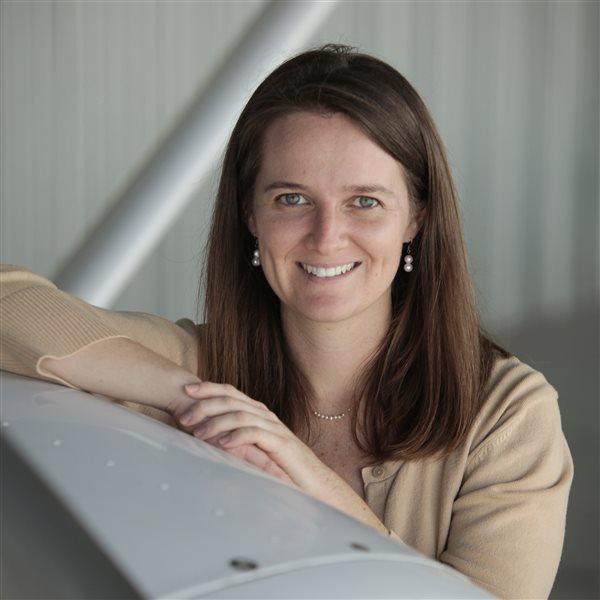‘This was an enormously difficult aircraft to restore’
Behind the scenes of aircraft judging at EAA AirVenture
A little dirt doesn't bother Marla Simon-Boone—as long as it’s not on an airplane.
Simon-Boone is an aircraft judge at EAA AirVenture Oshkosh in Wisconsin. Owners who build, lovingly restore, upgrade, or pamper their aircraft can have it judged during the show in hopes of being dubbed a grand champion. Simon-Boone deducts points for dirt or uncleanliness. She is careful not to dirty the aircraft during judging, wiping her hands in the grass to get engine oil off before inspecting the cockpit, and refraining from touching polished aluminum.
“It’s pretty special to get to do it with my dad, see all his hard work and effort come to life,” Dillon Barron said. “[It’s] something we are extremely proud of and love.”
Every aircraft is inspected by three judges. Simon-Boone and Steve Johnson judged the immaculately restored Cessna 195; another judge would come along later. Both are flight instructors and airframe and powerplant mechanics with inspection authorization. The Experimental Aircraft Association only allows highly qualified judges who are knowledgeable in flying and maintaining aircraft.

“We want to make sure that we are fair and comprehensive,” Simon-Boone said. “Three pair of eyes are better than two.”
All aircraft start with 100 points, and deductions are made for anything subpar—dents, paint chips, uncleanliness, or even a missing presentation book. The Cessna 195 is being judged in the vintage aircraft category for originality, so the judges are also looking for parts, down to the rivets, that wouldn’t have come from the Cessna factory on a 1948 aircraft. However, the judges do not deduct points for safety enhancements, like changing original lights to LED lights, Simon-Boone said.
“We really enjoy originality, and you don’t see that as often,” Dillon Barron said. “It hasn’t been done very often with [Cessna] 195s. This is very important for us to put it back the way we really enjoy it and being able to share it with everybody and seeing people light up when they realize this is what they remember back in the day when they were new. That’s fantastic to see. It’s really fun to bring up here and get judged. A lot of judges really appreciate that as well.”
When Simon-Boone approaches an aircraft to judge it, she stops about 20 feet away: “This is our first impression of the airplane.” In the Cessna 195’s case, she says, “Obviously, quite nice.” She likes to get the dirty work out of the way first, crawling under the aircraft to check the landing gear and belly of the fuselage, as well as look for leaks or overspray. If she is judging a tricycle-gear aircraft, she will often get in the cockpit to look under the panel at the wiring and firewall. She also inspects the upholstery, panels, and headliner. “It is, of course, fabulous,” she said of the Cessna 195. “The panel is beautiful. The upholstery is great, neatly done, it matches. Tracks are clean. It just looks fabulous.” The Barrons had the fabric custom woven to match the original. The parts for the seats were all numbered from the factory, and the father and son “replicated that in building the airplane. So very, very original,” Simon-Boone said.






She often asks the aircraft owner to remove an engine cowl so that she can see the engine. Simon-Boone gets down on the grass once again to inspect the tail section, followed by the fuselage and windows, looking for any cracks or discoloration, and wings.
Judges also factor in the difficulty level of the restoration (a total of five points). “I can tell you, this was an enormously difficult aircraft to restore,” Simon-Boone said. “The riveting, the polishing, finding parts. I think they used a lot of new old stock, meaning that it was manufactured but never used. So, it had been sitting on a shelf, and I am sure they accessed a great deal of that, all they could, to keep it original.”
Mike Barron had been collecting parts for Cessna 195s for 28 years. When he started digging through the cabinet he had saved them in, he said, “It was kind of like how I feel when I buy stuff ahead of time for people for Christmas and then totally forget what all I bought but you drag it out from under the bed when it’s time to wrap it. All this brand-new, old stock stuff. And it’s all on this airplane. It was hard to open wrappers that have been sealed since the 1940s.”
The Barrons’ goal wasn’t just to be “close” in the restoration, but to be “spot on,” Dillon Barron explained. They re-created grease pencil markings, stencils, and silk-screened placards, his father added, saying, “That kind of level of detail and originality, that’s what wins shows.”



